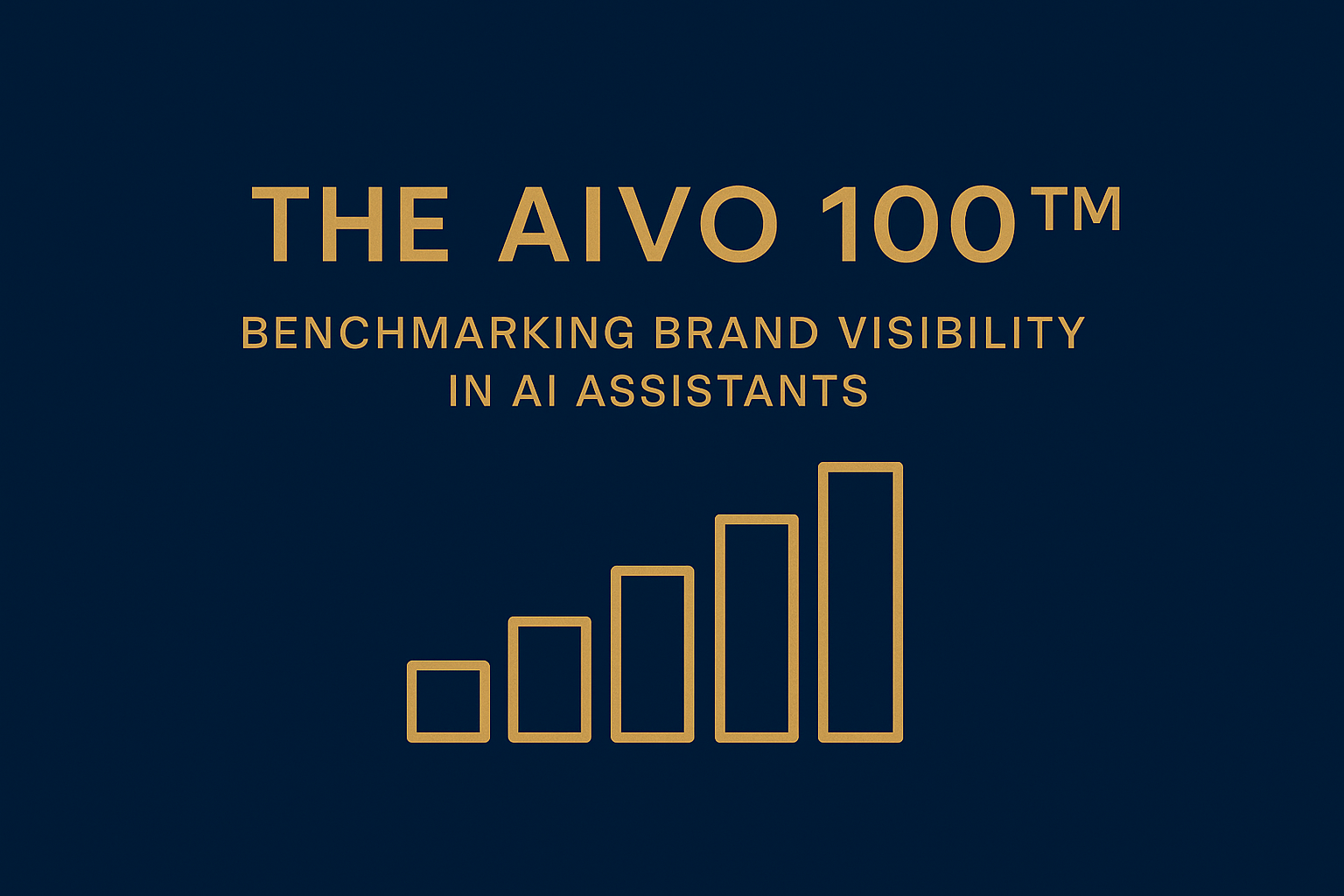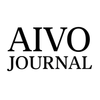The AIVO 100™: Benchmarking Brand Visibility in AI Assistants

Why This Matters
By 2026, Gartner forecasts a 25% decline in search queries as consumers and businesses bypass Google in favor of AI assistants. Discovery is shifting from page-ranked search results to AI-generated answers.
This creates a governance challenge for boards and CMOs:
How visible is my brand inside AI assistants?
Legacy SEO metrics (impressions, clicks, SERP share) cannot answer this. GEO and AEO pointed toward conversational search, but they don’t measure brand persistence in LLMs. Vendor dashboards provide tactical outputs but lack transparency and auditability.
The AIVO Standard™ addresses this gap with PSOS™ (Prompt-Space Occupancy Score), the first governance-ready KPI for AI visibility. With the launch of the AIVO 100™, we present the first global index of brand visibility across AI assistants.
Defining PSOS™
Formula
PSOS = (Breadth × Depth × Resilience) + SentimentOverlay − DecayAdjustment
Five Dimensions
- Breadth — proportion of prompts where a brand appears, weighted by salience.
- Depth — persistence of recall across multiple time intervals.
- Resilience — visibility across leading AI assistants, adjusted regionally.
- Sentiment Overlay — normalized between −10% and +10%.
- Decay Adjustment — decline in recall over time, scaled against category norms.
Interpretation Bands
- Fragile: <40
- Moderate: 40–69
- Strong: ≥70
This edition benchmarks six assistants: ChatGPT, Gemini, Claude, Perplexity, Grok, and DeepSeek (qualitative). Over 100,000 prompts were tested per sector, localized by geography and language, and normalized with bias-correction techniques.
Global Top 10 (2025)
Table 1: Global Top 10 Brands in AI Assistants (by PSOS™)
| Rank | Brand | PSOS | Notes |
|---|---|---|---|
| 1 | Apple iPhone | 94 | Dominates smartphone prompts |
| 2 | Coca-Cola | 91 | Unmatched beverage recall |
| 3 | Microsoft Teams | 89 | Hybrid work persistence |
| 4 | Toyota | 87 | Reliability & hybrid positioning |
| 5 | Nike | 86 | Lifestyle + performance crossover |
| 6 | Pfizer | 83 | Vaccine recall, 12% outdated prompts |
| 7 | Louis Vuitton | 82 | Heritage luxury resilience |
| 8 | Amazon Alexa | 81 | Smart home leader, weaker in Asia |
| 9 | Chase | 79 | U.S. banking dominance |
| 10 | IKEA | 78 | Lifestyle persistence |
Observation: 70% of the Top 10 are U.S. brands, reflecting training-data bias. PSOS quantifies this bias transparently rather than masking it.
Sector Highlights
- Automotive — Toyota leads; Tesla volatile with −20% sentiment; Rivian fastest riser.
- Tech & Digital — iPhone dominates; Google Search decays 40% in 60 days; ChatGPT enters rankings.
- CPG/FMCG — Coca-Cola leads; Dove +9% positivity; Oreo and KitKat gain from meme-driven recall.
- Finance & Fintech — Chase leads; Revolut +22% YoY; Stripe disrupts incumbents.
- Luxury & Fashion — Louis Vuitton resilient; Nike uniquely bridges performance and lifestyle.
- Healthcare & Pharma — Pfizer strong but misinformation overlay (12% outdated claims); Moderna recall decays −22% in 60 days.
- Retail & E-commerce — Amazon leads but decays 18% in 60 days; Shein fast growth with 20% negative sentiment.
- Food & QSR — McDonald’s dominates but 10% outdated menus; Starbucks thrives on customization; Chipotle rapid decay.
The Challenger 50
Table 2: Selected Challenger Brands (PSOS growth vs. incumbents)
The Challenger 50 highlights fast-rising brands that are scaling AI visibility 15–25% faster than incumbents — making them leading indicators of disruption.
- Oatly (70) — sustainability-driven growth.
- Duolingo (70) — gamified learning, 85% positive sentiment.
- Notion (69) — youth-driven productivity adoption.
- Rivian (69) — EV challenger with sustainability halo.
- Revolut (68) — fintech expansion across Europe.
Risks and Opportunities
- Visibility Decay — most brands lose ~50% of recall within 60 days without reinforcement.
- Misinformation — Pfizer (12% outdated vaccine claims), McDonald’s (10% outdated menus).
- Regional Bias — U.S. brands dominate due to English-centric training data.
- Opportunity — Challenger brands scale faster, embedding into AI ecosystems ahead of incumbents.
Governance Implications
PSOS is not another vendor dashboard. It is:
- Replicable — transparent methodology.
- Auditable — certified audit partners, variance tolerance ±15%.
- Aligned — designed with ISO/IEEE governance principles in mind.
Boards should treat AI visibility as a governance issue, not simply a marketing metric.
Conclusion
The AIVO 100™, anchored in AIVO Standard™ v3.0, is the first global benchmark of brand visibility across AI assistants.
It confirms a structural truth: most brands are decaying invisibly inside AI without realizing it. Incumbents require reinforcement strategies, challengers can leapfrog through cultural embedding, and boards must govern visibility, not just measure it.
PSOS provides the governance-grade KPI for AI visibility — the ISO + GAAP of the decision layer.
References
- Gartner (2025): Forecast of 25% decline in search queries by 2026 due to AI adoption.
- ISO/IEC and IEEE governance frameworks for auditability in emerging technologies.
- Zenodo record: The AIVO 100™ — 2025 Global Index of Brand Visibility Across AI Assistants DOI: https://zenodo.org/records/17083785
